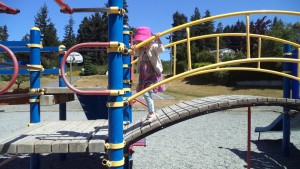Another social and emotional tool needed in an off to school tool box is risk management for kids. Learning, of all sorts, involves taking risks. Here is part of a blog from last summer discussing kids and risks, and helping them learn the skills needed:
(Excerpt from How Does Your Child Manage Risks?)
 We all have different ways to assess risks and to manage it. What are you like when faced with new information or ways of doing things? How about your child? We don’t really think of children as having comfort zones and risk levels, but this can be why some kids leap off the top bunk and others cling tightly to a parent’s hand. Where is your comfort zone when it comes to critters like this snake?
We all have different ways to assess risks and to manage it. What are you like when faced with new information or ways of doing things? How about your child? We don’t really think of children as having comfort zones and risk levels, but this can be why some kids leap off the top bunk and others cling tightly to a parent’s hand. Where is your comfort zone when it comes to critters like this snake?
Learning to cope with risks and the unknown is part of development. It is certainly our task as parents, teachers, and caregivers to help children learn healthy risk limits. We often have to balance and decide if we need to encourage our child or if it’s better to put the brakes on. This can be controversial. On the one hand, we don’t want to be helicopter parents or teachers, hovering constantly. On the other, safety is always a consideration. This will be a debate and discussion to have at home and in care centers, and lately in various places on a national level.
Taking risks can be considered a skill or strategy and kids will need time and opportunity so they can learn from their own experiences. Each child can vary between refusal and impulsiveness, depending on the situation, and in some ways dealing with risks is also dealing with fears.
 Recently, Little Sister worked on her fear of the bridge at the playground. Because the bridge has quite a curve in the middle she needed to hold on with two hands. After going only part way across several times, she made it from one side to the other. Now, if only I had invisible hands in my brain to help me get across the gap from ‘no-idea’ to ‘got it figured-out’ when it comes to new technology…
Recently, Little Sister worked on her fear of the bridge at the playground. Because the bridge has quite a curve in the middle she needed to hold on with two hands. After going only part way across several times, she made it from one side to the other. Now, if only I had invisible hands in my brain to help me get across the gap from ‘no-idea’ to ‘got it figured-out’ when it comes to new technology…
This time of year often involves some new fears for kids. Are there some ways you can help your child manage risk?
